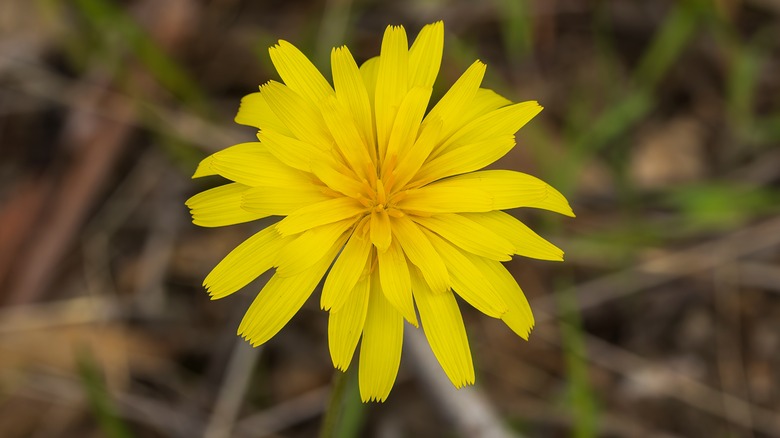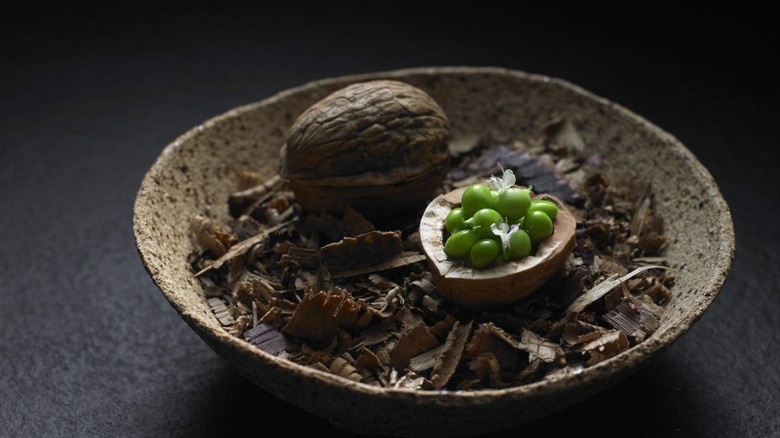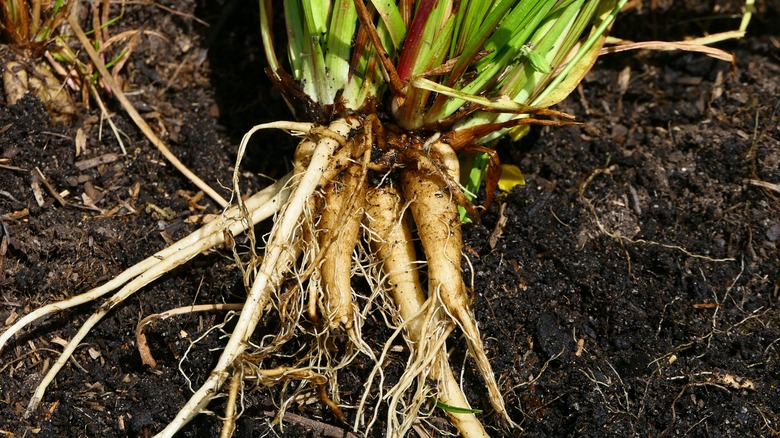Murnong Is The Australian 'Yam Daisy' That Tastes Like A Coconut
The world is full of interesting flavors, and the deeper you dig, the more interesting it becomes. Imagine strolling through Australian aboriginal bushland and you stumble across a little yellow flower that looks a bit like a dandelion. Chances are you wouldn't think much of it. Well, it appears it's actually an endangered native tuber that once was a domestic staple of the local aboriginal people. Unfortunately, with the arrival of European colonists, the lands where wild murnong once grew were destroyed by grazing sheep. We can't blame them, as they seem to have really enjoyed snacking on the yam daisy so much that they almost ate it all. Today, the plant is so rare that Smithsonian Magazine has included it in the top ten rarest foods in the world.
Murnong or yam daisy is an extremely interesting type of yam that, unlike its starchy cousins, sweet potatoes or yams, can be eaten raw — kind of like a radish crossed with a potato. There aren't enough studies on the full nutritional profile of this root yet, but the University of Tasmania says it offers some surprising health benefits and immune-boosting qualities. Sounds very intriguing, but the best news is it may be making a comeback.
Exotic murnong found a place in high-end restaurants
Yam daisy has a very exotic flavor: when eaten raw, it reminds more of radish or daikon with a grass-like coconut fragrance, but when cooked, it becomes more like a potato, only a bit saltier. Murnong has already caught the attention of some famous chefs in Australia, like Ben Shewry of Attica in Melbourne has happily put it on the menu at his restaurant. Shewry swears by using the murnong leaves as well; he finds their slightly bitter flavor can be a great addition to salads. Attica restaurant is known for its use of unusual local ingredients, and Shewry's murnong with crocodile fat butter sauce and herbs is definitely a testament to authentic Australian dining (more so than tasting kangaroo dishes in Sydney).
Pride in local bushland foods seems to be widespread, and not just in Australia's high-end restaurants. A group of aboriginal women has started a catering company in Castlemaine whose menu revolves exclusively around rare indigenous foods. They call themselves Murnong Mammas, which is a symbolic tribute to their aboriginal roots and a great way to re-popularize yam daisy in Australia.
Aboriginal farmers work hard to bring murnong back
For more than 10 years, Bruce Pascoe, an Australian historian, and agriculturalist has been the leading figure behind attempts to raise more awareness about indigenous murnong. A group of aboriginals, Gurandgi Munjie, led by Pascoe, has taken significant steps to restore the yam daisy to its glory. Although there is still a long way to go before it becomes a common crop, the group has cultivated the plant with the help of sustainable horticultural methods and has made some headway in Australia.
Pascoe isn't alone in this: in the hills of northeast Victoria there is another farmer dedicated to growing native bushland crops. Gay Baker planted murnong as a first crop a few years ago and has had good results. The hilly terrain she chose for her project isn't easy, but the native plants seem to love the adverse conditions and thrive there. According to Baker, there's more demand for native crops than people growing them, so we should definitely see an uptick — it's a good opportunity for farmers to put their unproductive land to good use.


